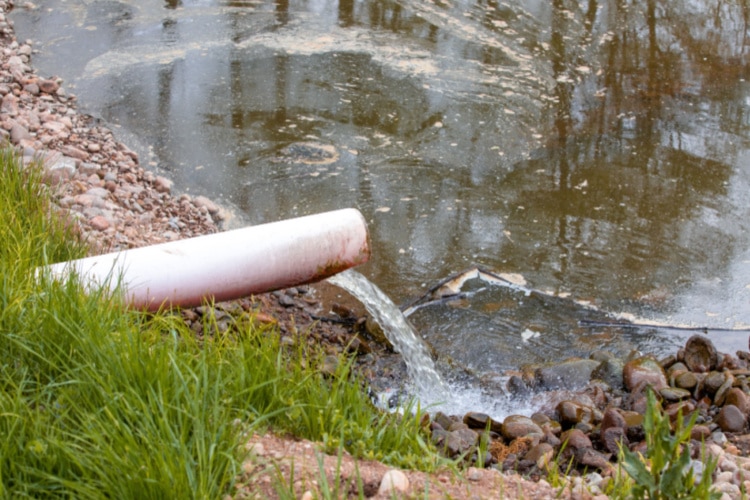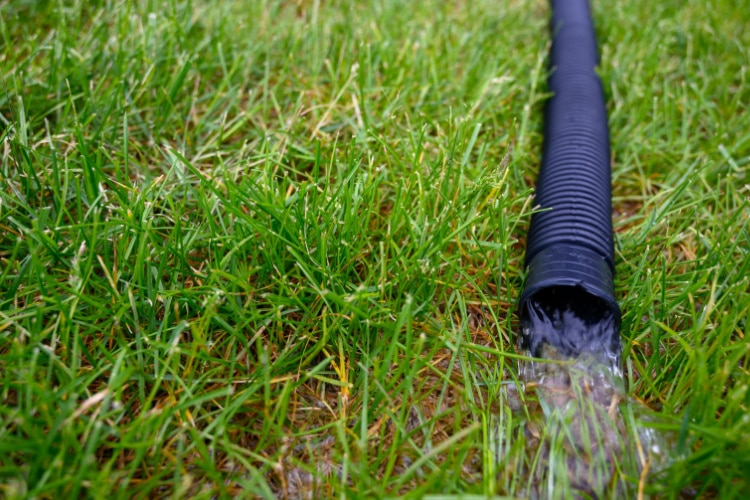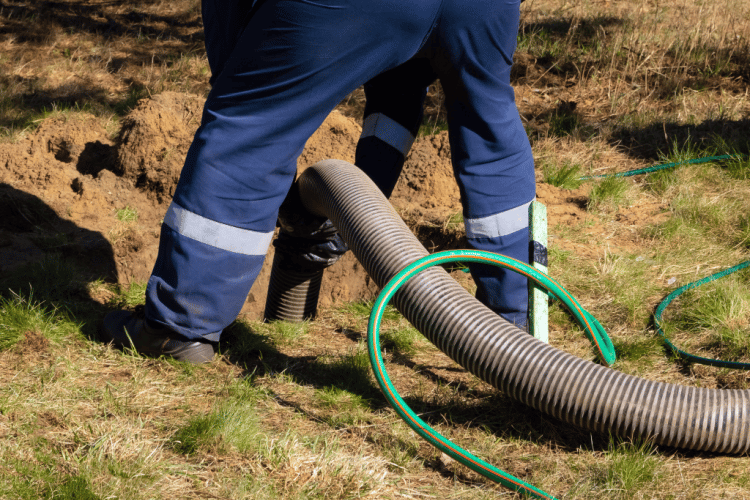Yes. The discharge that comes out of your resin tank will kill the grass if you empty it out on your lawn.
But what exactly is this discharge, and why is it so harmful to your grass?
Discharge Contents

The resin beads inside the main tank of the water softener are charged with sodium ions. Hard water contains large amounts of minerals like calcium and magnesium. When hard water is introduced to sodium resin, a process called ion exchange starts.
Through this process, the resin in the tank takes in the mineral ions that the water possesses and exchanges them for the sodium ions that are in the resin. When the mineral ions are removed, the water is effectively softened.
The resin beads don’t have an endless supply of sodium ions, so they need to be recharged periodically, which is where the water softener regeneration process comes in.
The regeneration process begins in the brine tank, where salt is mixed with water to create the substance known as brine. This brine is then introduced into the resin tank and essentially replenishes the sodium ions in the resin.
The brine also gets rid of the hard mineral ions that were left on the resin as a result of the ion exchange process. The resin is then rinsed out, and the contents of the tank are flushed out.
The flushed-out liquid contains both the sodium molecules that weren’t absorbed by the resin, as well as the mineral molecules that were removed from the hard water.
Damage to the Lawn

There aren’t any studies that have been done to simulate the effect that this exact solution might have on your lawn, but since the wastewater is rich in minerals, especially salt, it’s pretty safe to say that it’ll have a similar effect as salt water.
When salt is introduced to soil in large quantities, it has several negative effects. The sodium ions can cause sodium toxicity in plants, disperse fine soil, and clog the pathways that water and nutrients use to reach plant roots.
Salt is also a natural dehumidifier, which means that it soaks in water at incredible rates, leaving nothing for the plants and grass.
Additionally, while the magnesium and calcium ions in hard water might be somewhat beneficial to the soil, they can’t counteract the side effects of the sodium ions they’re mixed with in softened water.
Alternative Discharge Solutions

Dumping your wastewater directly onto your lawn is an incredibly bad idea, but there are several good alternatives.
Sewage Pipe
Water softeners need to be located near the main water supply for the house so that they can take in the hard water and supply the soft water to all of the bathrooms and the kitchen. This placement also brings them conveniently close to the sewage line.
Water softeners have a drain line for flushing wastewater down. The best way to get rid of this wastewater is to hire a plumber and have them connect the drain line of your water softener to the main sewage pipe in your home.
This way, the wastewater will simply go down into the sewage once it needs to be removed, and you don’t need to do a thing.
Drain Pipe
If the sewage pipe doesn’t run through your basement for some reason, or if you don’t want to pay a plumber for the installation, then you can solve the issue yourself.
If you have a drain pipe in your basement where the water collects, then all you need to do is take the drain line from your water softener and put it near or inside the drain pipe.
The force of the water will move the drain line every time water gets flushed, but there are a few simple methods you can use to keep it in place.
You could get a hose clamp and nail it to the floor. You could get a string and a brick, tie the hose to the brick, and have the hose be kept in place that way. Or you could simply use a bit of duct tape to hold it in place.
It doesn’t really matter which option you go with as long as the hose stays firmly in place rather than splashing around and making a puddle in your basement.
Plastic Bucket
If you don’t have a drain pipe or a sewage pipe near your water softener, then you’ll need to drain the wastewater in a bucket or a large container of some sort.
Once the container is full, find a working drain in your home or somewhere on your street, and dump the contents of the bucket down the drain.
This method requires the most manual labor, but if the other two methods are unavailable, this is your only option.
Don’t Water Down the Discharge
People don’t like wasting water, so they’ll come up with many different uses for it. In an attempt to somehow salvage the water softener discharge and make sure that it doesn’t go to waste, many people try to dilute it before spreading it on their lawns.
Adding soft water to the discharge somewhat counteracts the high levels of sodium. However, it’s not like the minerals are going anywhere.
For example, if there are 10 grams of salt in a gallon of water, and you add a gallon of soft water to the bucket, there are still 10 grams of salt in the bucket, but now it’s disbursed in 2 gallons of water.
While this does dilute the concentration, the salt is still present, and it’ll still do the same amount of harm to your lawn. This is why we’d recommend staying away from this method of wastewater disposal.
Conclusion
Under no circumstances should you use water softener discharge on your lawn. The alternative methods we listed might be a bit more difficult to implement, but at least they don’t involve killing everything that grows on your property.
The best option is to connect the water softener drain line up to your sewage pipe so that the wastewater can get removed automatically. The second best option is to manually connect the drain line up to a drain pipe that’s located close to your water softener.
And finally, if you can’t use either of the previous methods, collecting the water in a bucket and dumping it down a sewage drain is your best bet.